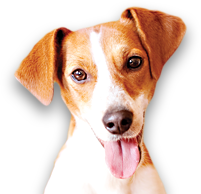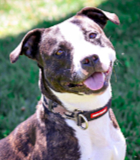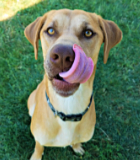DESTRUCTIVE CHEWING
- This topic has 0 replies, 1 voice, and was last updated 15 years, 10 months ago by
Mackenzie’s Admin.
-
AuthorPosts
-
January 23, 2009 at 12:02 am #311
Mackenzie’s Admin
MemberDogs chew for fun, they chew for stimulation and exercise, and they chew to relieve anxiety. But sometimes they chew things they shouldn’t-like the leg on the new table, or all the shoes in your closet. And because your dog is not born knowing what is off limits, it’s up to you to teach him.
Four-month-old Jazzy, a “mostly Lab” puppy, has just been adopted by a newlywed couple. They head out to shop for supplies, leaving Jazzy free to explore her new abode. But after spending several days in a boring old cage at the shelter, Jazzy is bursting with energy and ready to examine the couple’s finery in great detail—by running it through her mouth. Two hours later, the newlyweds arrive back home to find feathers everywhere, not to mention a puppy with a very bad bellyache who requires a trip to the veterinarian. Can this adoption be saved before “Jaws” strikes again?
Chewing is a common complaint among those caring for dogs younger than one year old. Part investigation, part teething and 100-percent fun, chewing is a rewarding activity for dogs; and rewarding activities are likely to be repeated. But with a combination of training and chewing-management methods, dog guardians can keep their homes intact and their dogs in their homes.
Dogs are apt to chew for several reasons. First, they are curious creatures who lack opposable thumbs. Hence, they cannot pick up most objects with their paws for closer scrutiny. Instead, they examine them with their mouths. Second, from four to eight months of age, they will shed all their deciduous (puppy) teeth and grow a new set of permanent teeth. Chewing assuages the discomfort that accompanies teething. Third, chewing expends energy and gives a bored pup something to do. Older puppies and young adolescents are bursting with energy. If not properly exercised, they may expend that energy gnawing on your family heirlooms. Fourth, dogs suffering from separation anxiety often chew objects embedded with their owners’ scents to help relieve the stress of being left alone. Finally, some dogs were purposefully bred to use their mouths. Retriever owners are the group most likely to complain about excessive mouthing and chewing by their pups.
Take the Bite Out of Teething
It is possible to get through this difficult stage without major losses. The first step is to create a safe haven for your puppy. A dog crate or small, carefully dog-proofed area will do. When dog-proofing an area, get down at puppy eye-level to scope out potential problems. Electrical wires, drapery cords, and curling wallpaper corners will jump out at you from this vantage point. When you cannot supervise your puppy, place her in her safe haven with an approved yummy chew toy, like a rubber Kong™ toy stuffed with kibble in a bit of cream cheese.Invest in a variety of chew toys appropriate to the size and chewing preferences of your dog. As the dog’s guardian, the onus to select desirable yet safe chew toys falls on you. Items such as beef-marrow bones, rawhide, chew hooves and pigs’ ears all have their pros and cons. The first few times you offer such items to your dog, watch closely to make sure they’re suitable for her. Throw away any sharp splinters or small, sticky remains. Alternate the chewies to keep her interest high, and save the most desirable of them for crate time or when the puppy is left alone.
Cue Good Behaviors
The only way a dog can learn which items are okay to chew and which ones are forbidden is by getting well-timed feedback from her humans. When she eyes or chews a table leg, give a verbal warning such as “eck” or “phooey” and then draw her attention to an acceptable toy. When you catch your dog chewing on an approved object, don’t forget to praise her, reward her with a tasty morsel and tell her to carry on. Remember that rewarded behavior is more likely to be repeated. If the table leg or rug fringe remains your dog’s favorite chew toy, diminish its desirability by coating it with a commercial anti-chew cream (for wood) or spray.It’s also important to keep in mind that a young dog does not need access to the entire house. If you have children who are messy with their toys or a spouse who can’t seem to locate the dirty laundry bin, keep the dog out of those rooms by closing bedroom doors or installing pet gates during the dog’s chewing phase. Through a combination of management and training methods, assisted by the natural aging process, the Jazzies of the world will outgrow their “Jaws” nicknames and eventually earn full household access. Until then, make use of your dog’s safe haven when you aren’t there to supervise and you’ll no longer fear what awaits you when you walk through the front door.
By Jacque Lynn Schultz, CPDT
Companion Animal Programs Advisor
ASPCA National Shelter Outreach -
AuthorPosts
- You must be logged in to reply to this topic.














































